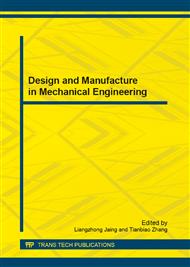p.3
p.7
p.11
p.16
p.20
p.25
p.32
p.39
Structure Transition and Electrocaloric Effect of Pb(Zr1-xTix)O3 at High Field
Abstract:
We investigated the structure transition and the electrocaloric effect in PbZr1-xTixO3 (PZT) with x=0.7, 0.8 and 0.9. The results show that 50 MV/m can make the structural transition be a continuous one. When x=0.7, 0.8 and 0.9 at the zero field, the first order structural transition occurs at T0=685, 687, and 698 K, respectively. Upon a strong electric field, the first order structural transition comes to the second one, which leads to lower the change of specific heat. The structural transition temperature is shifted at high temperature with increasing electric field. The maximum electrocaloric effect is present occurs at about 200 K above the corresponding Curie temperature. With increasing composition of Ti, the electrocaloric effect is enlarged, together with increasing structure transition temperatures.
Info:
Periodical:
Pages:
3-6
Citation:
Online since:
September 2013
Authors:
Keywords:
Price:
Сopyright:
© 2013 Trans Tech Publications Ltd. All Rights Reserved
Share:
Citation:


